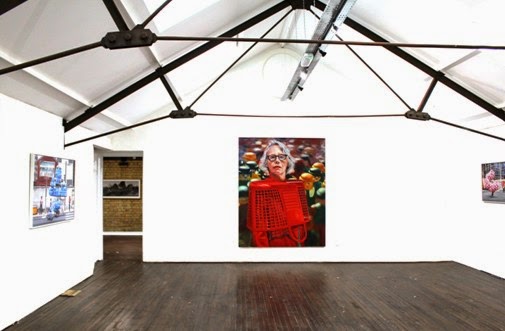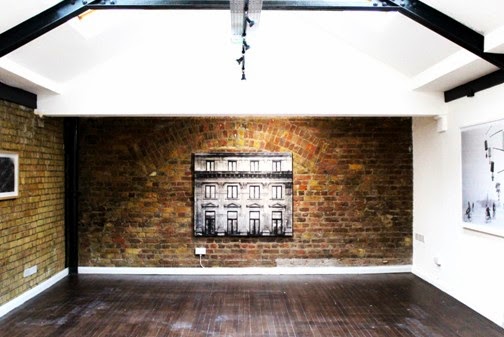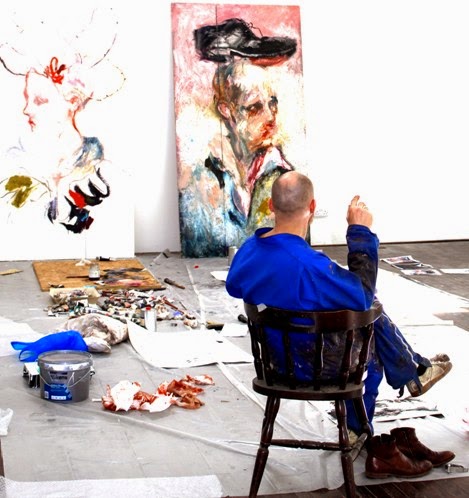
The London Project @ 61 Charlotte Street
The London Project is the new exciting venture of Paris-born art dealer Magda Danysz. Located on 61 Charlotte Street, the new space will embrace artistic practices and artists working with the other two galleries owned by Danysz, in Paris and Shanghai respectively. Combining both a white cube space and a diverse area of subterranean vaults, invited artists will respond to the gallerist’s new chosen locus and will offer the London audience the opportunity to witness the creative process over a period of four months.
Magda Danysz talked to REVma -/+ about The London Project and her vision.
K.P.: You currently have two art spaces, one in Paris and one in Shanghai. What triggered the decision to expand in London?
M.D.: At first it was an instinctive decision, a crush on the place. With such a perfect location and an amazingly inspiring space I gave it a go. London being such an active place in the arts, it would be interesting to make a bridge with our two other galleries. Giving our actual artists a stage in the UK is something important and being active in this city also allows us to get closer to British artists. The scene here is very active and vibrant. From the inside I also have to admit that the passion we have for constant challenges is a drive for my ‘wunderteam’ and the roaster of artists I work with for so many years.
K.P.: Why did you choose the area of Noho to locate your gallery?
M.D.: Charlotte Street’s position is ideal when one wants to share art with different audiences. Let’s not forget that if galleries are open to the public it is because they want to share the artists they promote. Charlotte Street is at the same time super central and interesting mix of artsy places, nice cafes, hip restaurants and luxury hotels. All these together give an exciting group of people, curious, dynamic and diverse.

K.P.: How have you envisaged The London Project and why should art enthusiasts and professionals come to visit?
M.D.: The London Project is the natural extension of a project I curated in Paris in 2013. At that time, the owner of an entire building gave me the keys and freedom to run an artistic project. This specific building had an intense history since it hosted from 1978 and for almost 30 years one of the most famous and iconic clubs in Paris, Les Bains-Douches. From Warhol to Madonna, everyone had been a regular at that place. Getting into this venue, even though it was closed for years, it was quite inspiring and, to cut a long story short, after four months of residency and site specific productions we had fifty international artists who came and did amazing artworks. The beauty of the project was that at the end everything was gone. It was just a moment in time. A move we all did just for the sake of the arts. Sometimes we have to remember that art is not only about the market, but it is also about inspiration. The project has even made it to a book which was published and was widely distributed.
With The London Project the idea is to have people witness also this work in progress. It is important to understand that the artistic process is often as important as the result. As in the past, the project is ephemeral, everything will vanish and go at the end. We have 100 days for this specific project, 100 days to make it happen.
Such curated projects are also intended to show that art is very interesting in its contextual researches. The usual white cube exhibition space (which we also have on Charlotte Street) is a good thing but sometimes more context can bring different perspectives. So for the next 100 days the artists I invite will get their inspiration from this place I had a crush on at first sight.

K.P.: You are a supporter of digital art and video as well as street art and Chinese contemporary photography. Are you planning to showcase these and how do you expect the London audience to respond?
M.D.: The programme intends to be the same as in Paris and London, including digital art, street art, photography and everything I have always supported. It has always been hard for me to restrain myself from getting involved in just one field. For me, the art cannot be put in boxes, artists explore different ways in their whole career and I wish to respect that. The approach is more about the inspiration contemporary art gets from society. Photography, video, street art and digital art are exactly the reflection of our contemporary issues and development. Art is the mirror of our society and I have always felt that, like Prometheus, artists shed a light on some kind of truth or at least vision. I hope the London audience will understand that diversity and offering different ways of enjoying art is not about looking down to it. Curious people will always find new approaches and make discoveries.
K.P.: What are the advantages of a pop-up gallery as opposed to those of a traditional gallery space?
M.D.: The urge of a pop-up project and the ephemeral factor of The London Project is something I like to work with. Nothing is taken for granted, and the visitors come for this. Furthermore, a pop-up gallery is a way to test the market and see what can be done, maybe on a longer run. Being able to have at the same time a space which is quite big -combining a classic exhibition space and site specific areas- makes it more dynamic. There will always be something new in order to create a much more diverse schedule of events compared to what we are used to in our other galleries.
